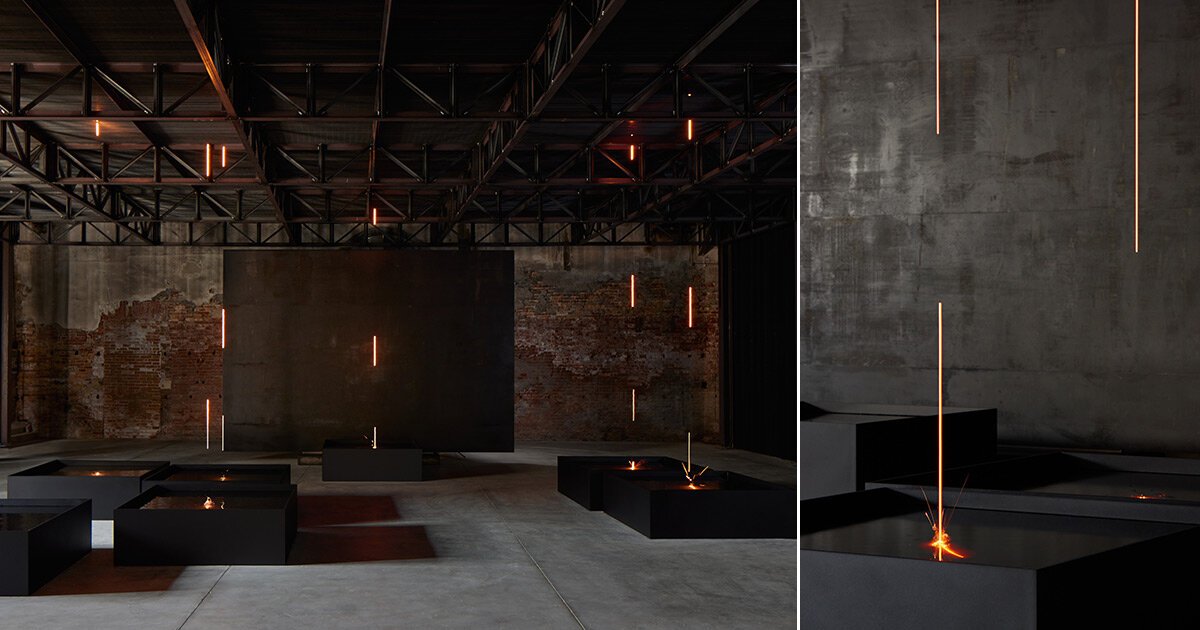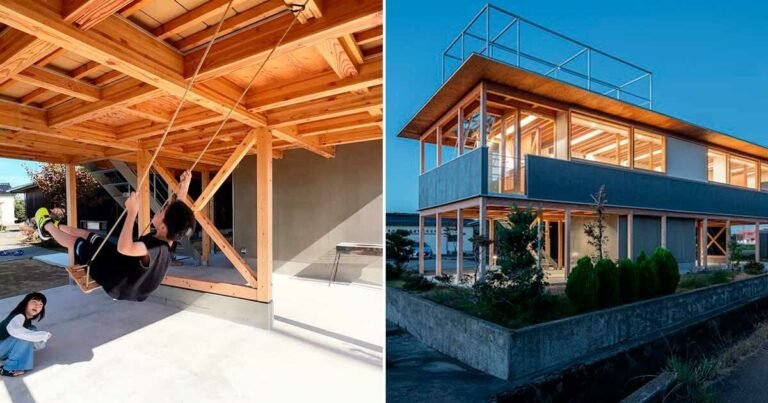molten steel hisses in water at malta’s pavilion for venice art biennale 2022
malta’s pavilion hisses melting metal droplets for biennale
An immersive, biblical narrative is overlaid onto the present as Arts Council Malta announces the Malta Pavilion for the 59th International Art Exhibition of La Biennale di Venezia 2022. Titled ‘Diplomazija astuta’ (cunning diplomacy), the work reimagines Caravaggio’s seminal altarpiece ‘The Beheading of St. John the Baptist’ as a traversing sculptural installation. Through the use of induction technology, the kinetic artwork conjures molten steel droplets falling overhead into water basins, which then hiss and recede into darkness, creating a visual and physical impact for whoever walks through the contemporary brutality.

(above) Diplomatijza astuta/Cunning diplomacy for the Malta Pavilion at the 59th International Art Exhibition La Biennale di Venezia. ⒸAgostino Osio, Alto Piano
(banner) the installation is curated by Keith Sciberras and Jeffrey Uslip. ⒸAgostino Osio, Alto Piano
all images courtesy of Malta Arts Council
From noetic to metaphysical references and from year 1608 to 2022, Arts Council Malta presents the Pavilion ‘Diplomazija astuta‘ for the Biennale Arte 2022. Curated by Keith Sciberras and Jeffrey Uslip, the installation re-situates Caravaggio’s artwork ‘The Beheading of St. John the Baptist’ within modern life. In a dark, mystic ambience, viewers are prompted to traverse a space where the tragedy of the biblical execution is experienced in the present.
‘This extraordinary and timely installation—an invention of the collaborative creative effort between our curators and artists—puts forth a Malta Pavilion that layers that which is said to have passed with that which is still unfolding. Diplomazija astuta creates a palimpsest that uniquely operates within the realms of Caravaggio’s altarpiece and contemporary Maltese visual culture,’ notes Arts Council Malta Executive Chairman Albert Marshall.

‘Diplomazija astuta’ reimagines Caravaggio’s seminal altarpiece ‘The Beheading of St. John the Baptist’. ⒸAgostino Osio, Alto Piano
the molten emblems echoe with the haunting music
Arcangelo Sassolino’s kinetic installation echoes molten steel droplets that fall from a structure overhead into seven basins of water, each representing a subject in ‘The Beheading’. Upon contact with the water, the bright orange embers hiss, cool and disappear into the shadows. To accompany the haunting room, musician Brian Schembri composed a hymn that rhythmically follows the timing and frequency of each droplet, while Giuseppe Schembri Bonaci’s incisions into the installation itself (a sculpted ciphertext) propose a daunting salve that embeds engaging knowledge into the work.

Giuseppe Schembri Bonaci’s incisions into the installation itself propose a daunting salve embedding knowledge beyond grasp. ⒸAgostino Osio, Alto Piano
the pavilion references the political complexity of modernity
Through the representation of the artwork in a contemporary sculptural language, the artists seek to resonate with current world events that reveal humanity’s failures. Deceit, media manipulation and the weaponization of ideas embody the present times in the form of the melting steel; in other words, humankind’s capacity to self destruct only to create space for a new progress to occur.
‘With the United Nations Sustainable Development Goals at the forefront of our minds, this iteration of the Malta Pavilion demonstrates how art can represent society’s ideologies and ideals. Our Malta project presents a transcendent cultural experience where beholders imagine a path towards reconciliation; it brings us great pride to put forth this salient project at one of the largest exhibitions of contemporary art in the world,’ states – Dr Owen Bonnici, The Minister for The National Heritage, The Arts and Local Government.





